A Slice of the Modern Period
In the context of the epoch, Kandinsky’s biography became relevant as he joined the Blue Rider and gained an opportunity to find his unique manner of painting. Before the Blue Rider, Kandinsky’s experience was restricted to following the traditions of the genre (Boehmer, 2013).
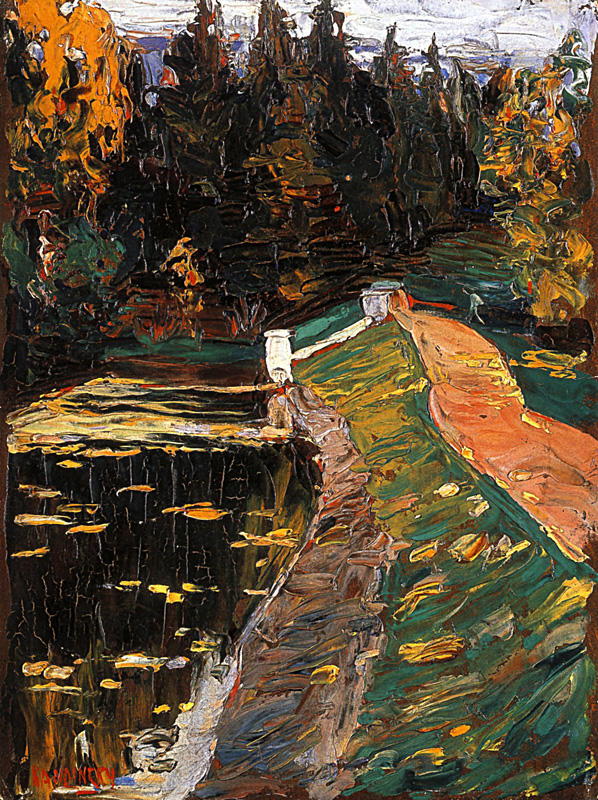
Kandinsky, W., (1901). Study for the sluice.
The Blue Rider, however, triggered a massive outburst of expressivity in Kandinsky and resulted in a series of paintings that defined the artist’s future style. It was after the communication with the members of the club that Kandinsky finally realized what he could contribute to Modern art.
Even though the idea of using color as the means of expression did occur to several artists before Kandinsky and had become a well-trodden path by the time that Kandinsky started painting, the artist still managed to find an innovative way to use color in Expressionist paintings. In Kandinsky’s artworks, the color was no longer the medium to convey a particular emotion – it was the embodiment of emotion.
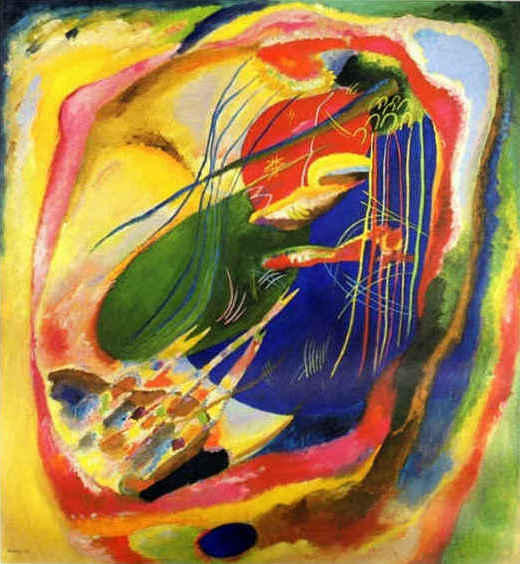
Kandinsky. W., (1914). Painting with three spots.
As Kandinsky explored the world of Expressionism, he blazed new paths in this style, experimenting with color like an alchemist. The so-called Bauhaus period of his evolution as an artist signified an even greater emphasis on the use of color in painting; this time, Kandinsky insisted that his color theory can be related to some of the psychological personality theories (Short, 2010).

Kandinsky, W., (1922). Small worlds.
Abstractionism needed Kandinsky as much as Kandinsky needed Abstractionism. It is remarkable that the artist emerged with his creations at the same time when the Abstractionist movement began to subside, only to be replenished with new ideas.
Characterized by a variety of styles, each demanding unceasing attention, Modern period could be defined as the era of artistic experiments (Bassie, 2008), and Kandinsky did exactly that – he experimented in search for the ultimate formula of Modern art.
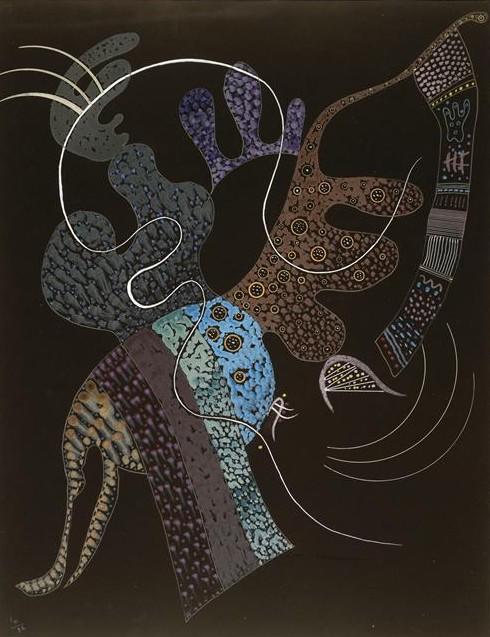
Kandinsky, W., (1936). White line.
The Color of Expressionism
As it has been stressed above, Kandinsky experimented with colors in his artworks. He was one of the voices of the Expressionist generation of artists. However, he was not alone – quite on the contrary, he competed and collaborated with several other artists that created artworks in Expressionist manner.
A product of angst, Expressionism emerged in Germany as a counterpoint to Impressionism and the attempts of its adepts to avoid including additional layers of meaning into the artwork. Considering Impressionism too simplistic, Expressionists claimed to depict reality in much better thought out manner and with more hidden innuendoes for the audience to discover.
Among the most notable artists creating Expressionist artworks, the members of the Blue above Rider should be named. Lyonel Feininger and his Gaberndorf II, Albert Bloch and his Kreuztragung, Franz Marc with his The large blue horses, Gabriele Munter and his Countryside near Paris, were in the spotlight of the Blue Rider (Gray, 2007).
The Blue Rider, however, was by far not the only refuge of Expressionists. Apart from the Munich club, the Dresden Die Brucke is worth being listed among the most well-known cluster of the world’s most renowned Expressionists. Much like the Blue Rider, Die Bruke included several participants, the most famous ones being Bleyl, Heckel, and Kirchner.

Bleyl, F., (1906). Ausstellung Kunstlergruppe Brucke.
Even nowadays, several artists work in Expressionist genre or at the very least tend to include the elements of Expressionism in their artworks. Among the most notable ones, Roy Lerner, Bruce Piermarini, and Joseph Drapell must be named.
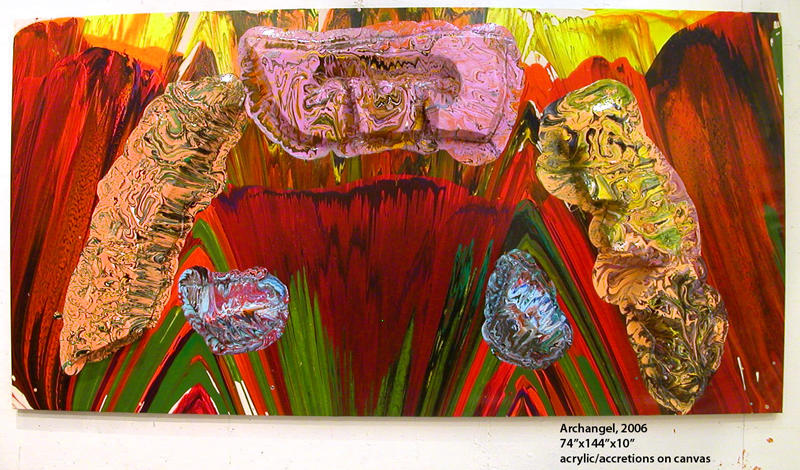
Piermarini, B., (2006). Archangel.
Personal Impressions
Having a great appreciation of Expressionists and their works, I must admit that Kandinsky’s paintings have affected me immensely. As it has been stressed above, Kandinsky’s choice of colors and feeling of color was unbelievable.
Whenever I take a glance at any of his paintings, I feel that colors not only serve a purpose in his works but also tell a story; moreover, I often have the weirdest feeling that, with a different color cast, the story would have been completely different as well.
Studying Kandinsky’s life helped me understand how he managed to find this unique balance between expressing his emotions and capturing the tiniest details of reality. Unlike the rest of Expressionists, Kandinsky not only suggested his point of view, but also involved the audience into a dialogue, and the study of his artistic path allowed understanding how he managed to accomplish it.
Of course, I would be lying if I said that Kandinsky’s works of art changed my entire perception of reality. However, they did provide an opportunity to see the world in a slightly different light, and I cannot help appreciating the artist for this chance.
Speaking of my favorite work of his, Composition VII strikes me with its scale and enthralls me with its attempt at capturing the chaos of the XX century. Labeled by the author as his most complex work ever, Composition VII deserves the highest mark on the scale from one to ten.
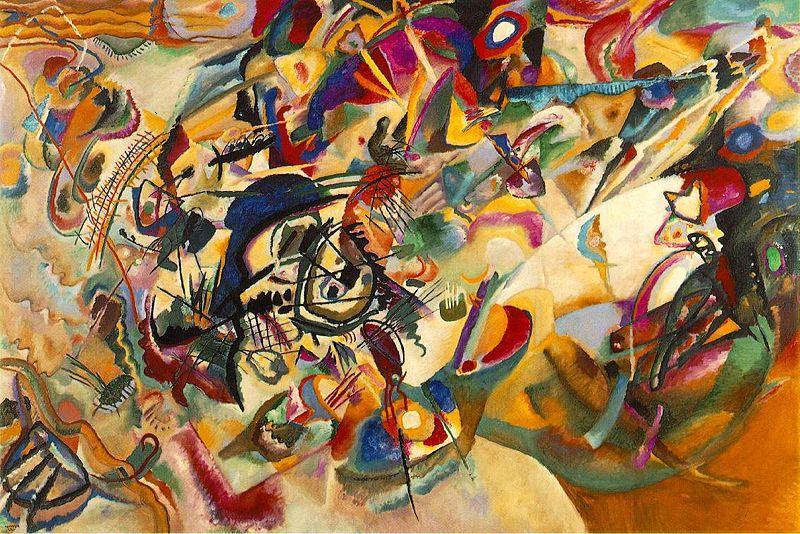
Kandinsky, W., (1913). Composition VII.
Reference list
Bassie, A., (2008). Expressionism. New York, NY: Parkstone International.
Bleyl, F., (1906). Ausstellung Kunstlergruppe Brucke. Web.
Boehmer, K. (2013). Schonberg and Kandinsky: A historic encounter. New York, NY: Routledge.
Gray, J. (2007). Germany. Melbourne, AU: Lonely Planet.
Kandinsky, W. (1901). Study for the sluice. Web.
Kandinsky, W. (1913). Composition VII. Web.
Kandinsky. W. (1914). Painting with three spots. Web.
Kandinsky, W. (1922). Small worlds. Web.
Kandinsky, W. (1936). White line. Web.
Piermarini, B. (2006). Archangel. Web.
Short, C. (2010). The art theory of Wassily Kandinsky, 1909–1928. Bern, SW: Peter Lang.